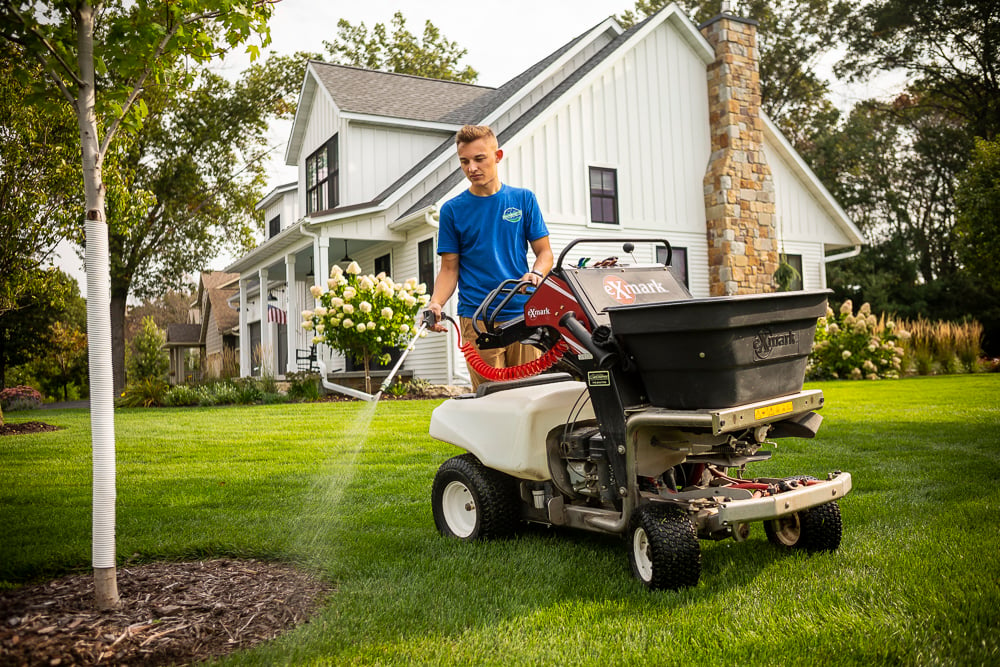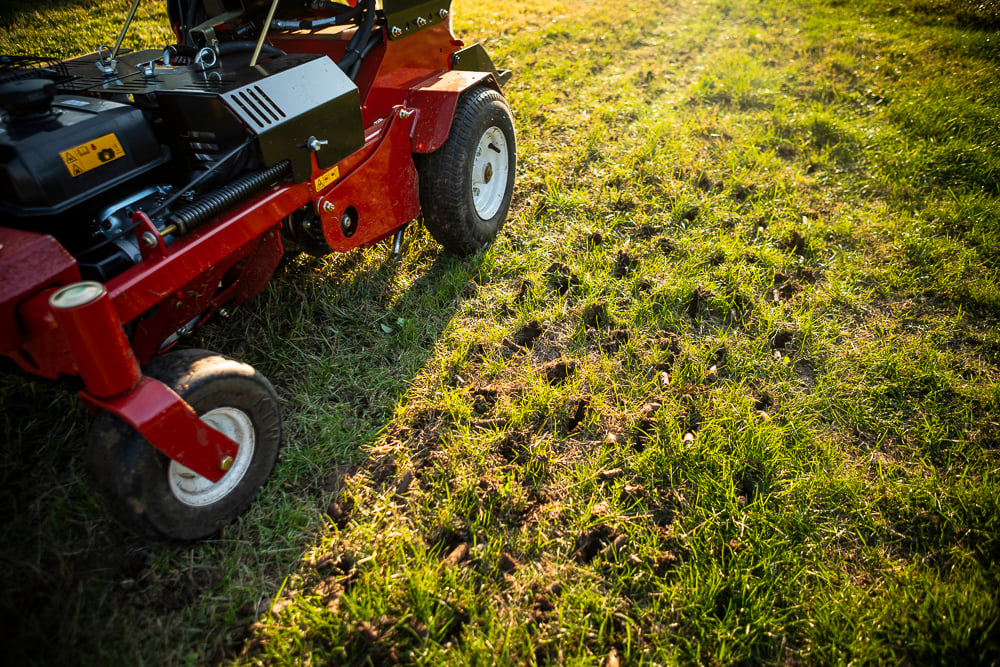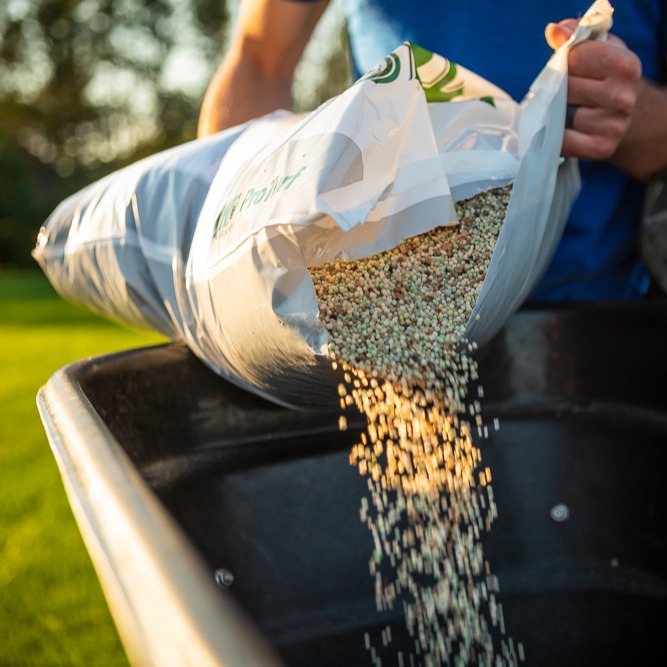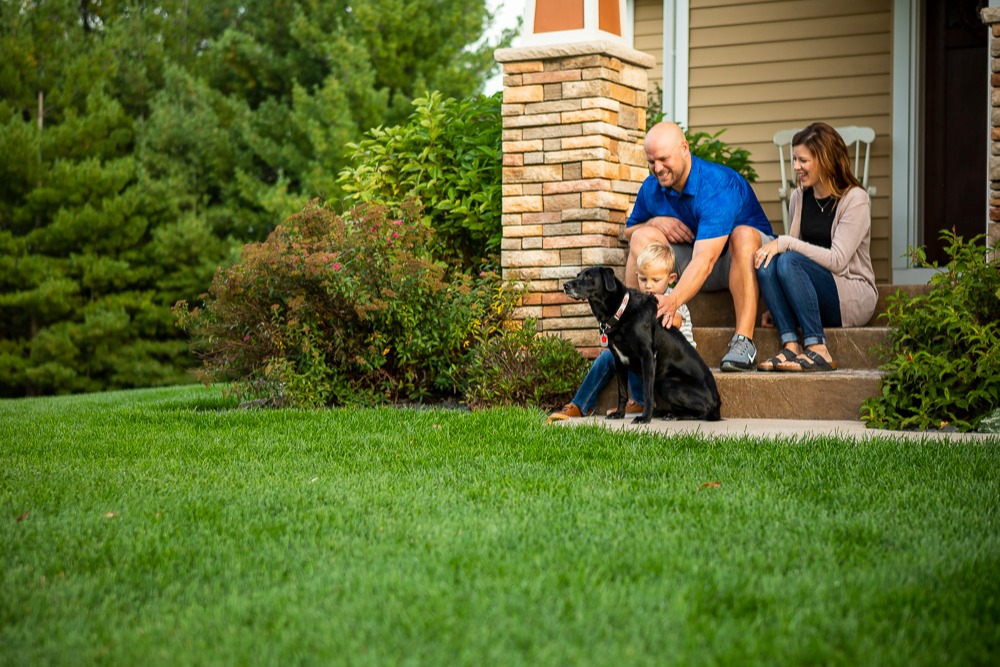It’s easy to freak out about mold.
It can show up on your cheese, in your shower, and nobody’s ever happy about it.
What happens when snow grows mold on your lawn?
Is snow mold harmful? Will grass come back after snow mold?
It’s all pretty good news here.
Let’s learn more about snow mold lawn disease, including:
- First Up, What Is Snow Mold Lawn Disease?
- What Does Snow Mold on Grass Look Like?
- How Do You Treat Snow Mold on Your Lawn?
- Can You Help Prevent This Winter Lawn Disease?
- Consider Aeration
- Attack Those Mountains of Snow
- Winter Lawn Damage? You Might Need to Reseed
- Preventing Lawn Diseases Year-Round
No, snow mold isn’t harmful, even though it looks alarming.
Your grass should return once you get out with your trusty rake and fluff up the matted, affected areas.
First Up, What Is Snow Mold Lawn Disease?
Snow mold is one of several lawn fungal diseases, but while most show up in the summer, snow mold is a common cold-weather lawn disease.
Because we usually get plenty of snow here in Minneapolis, MN and Eau Claire, WI, snow mold likes it here.

Snow mold also loves Kentucky bluegrass and perennial ryegrass, popular cool-season grasses here.
What Does Snow Mold on Grass Look Like?
You can’t see snow mold as it first starts to form. It grows beneath those big piles of snow in your yard.
The longer your lawn is covered with snow, the better the chance snow mold will develop.
But when the snow melts, you’ll see the snow mold fungus — tan or grayish-white patches in your lawn that look brittle and matted, like straw.
Depending on the type of snow mold lawn disease, it can also look pink, but the gray variety is more common here in Wisconsin and Minnesota.
How Do You Treat Snow Mold on Your Lawn?
As that snow mold lingers on your lawn once the snow melts, it looks bad. But it’s also blocking important sunlight from reaching your lawn.
Your grass needs sun to help it green back up for the growing season, so you’ll need to head outside with a rake after your lawn has dried out after the melt.
Use a leaf rake to fluff up the matted areas. But be gentle — your grass is still fragile, and you don’t want to tear it up. You want to remove the moldy areas. Apply some fertilizer to encourage new growth.
Fungicide kills lawn fungus, right? Should you use that?
Not with snow mold lawn disease. Fungicides aren’t effective for snow mold control. They don’t prevent the mold from damaging the grass.
Your best plan is to gently break up the snow mold fungus and remove the affected patches.

Raking loosens up your lawn so air can better circulate and sunlight can reach the grass to help dry it out and green it up.
Will grass come back after snow mold? Yes — you should notice your lawn greening up within a few weeks
Can You Help Prevent This Winter Lawn Disease?
More good news: there are steps you can take to prevent snow mold fungus:
Removing fall leaves helps to prevent snow mold. Those soggy old leaves in your lawn hold onto moisture, and snow mold loves that.
So remove those wet leaves and other gross debris from your lawn in the fall before the snow season.
Consider Aeration
Snow mold loves thatch, that layer of dead grass and stems between your grass blades and the soil. Too much thatch is like a big welcome mat for this winter lawn disease.

Aeration can help. It uses a machine to pull out tiny cores of soil and plugs from the thatch, helping the thatch decompose and allowing oxygen, nutrients, and moisture to reach the roots.
Attack Those Mountains of Snow to Prevent Winter Lawn Damage
As those big piles of snow linger on your lawn, snow mold is thriving under there.
Snow that hangs around forever and melts slowly keeps your grass wet, cool and soggy — which encourages snow mold.
You and your shovel can help out the situation by breaking up big piles of snow and spreading it around in a thinner layer so it melts faster.
Winter Lawn Damage? You Might Need to Reseed
Once the snow melts and you rake out the snow mold, there might be bare spots to repair.
Loosen the soil, add topsoil to level out any low spots, and plant grass seed to fill those bare areas.
Common turfgrasses won't spread and fill bare areas on their own. And, the longer bare soil is allowed to linger, the more likely weed seeds will find their way into the voids.
Getting ahead of weeds and unsightly bare spots with reseeding will head off both of these common lawn issues.
Preventing Lawn Diseases Year-Round
You can do a few things to prevent lawn fungus year-round, including proper mowing, watering and fertilizing.

A healthy lawn is better equipped for trauma like lawn diseases. Here are a few tips:
- Fertilize your lawn in the fall and spring to keep it healthy and give it a better chance of surviving lawn fungus.
- Aeration, aeration, aeration. You want to reduce compaction and thatch and improve your lawn’s drainage.
- Don’t water too often — you don’t want your lawn too wet. Water less frequently but for longer. When the roots have to dive deeper for moisture, your lawn develops a stronger, healthier root system.
- Water early in the day, before sunrise, so your lawn can fully dry before evening.
- Keep lawn fungus from creeping in by setting up your lawn for success with a proactive lawn care program.
Get a Healthy, Thriving Lawn with RainMaster
When you live in Wisconsin or Minnesota, big piles of snow are part of the deal.
So you might face some snow mold fungus. No need to panic.
But the healthier your lawn, the better it can stand up to lawn invaders like fungus. That means partnering with experienced pros in lawn care and lawn disease in Minneapolis, MN & Eau Claire, WI.

Give your lawn a fighting chance with a proactive lawn care program with a custom nutrition plan and aeration.
The roots will be nourished, the soil packed with nutrients will be able to drain better, and your lawn will be thick and healthy, so lawn diseases will have a harder time taking hold.
Want to be confident about your choice of lawn care services in Eau Claire, WI or Minneapolis? Request a quote today! We’ll review your lawn care options together so you can make a great choice. Then, you can finally enjoy your lawn and stop worrying about it.



